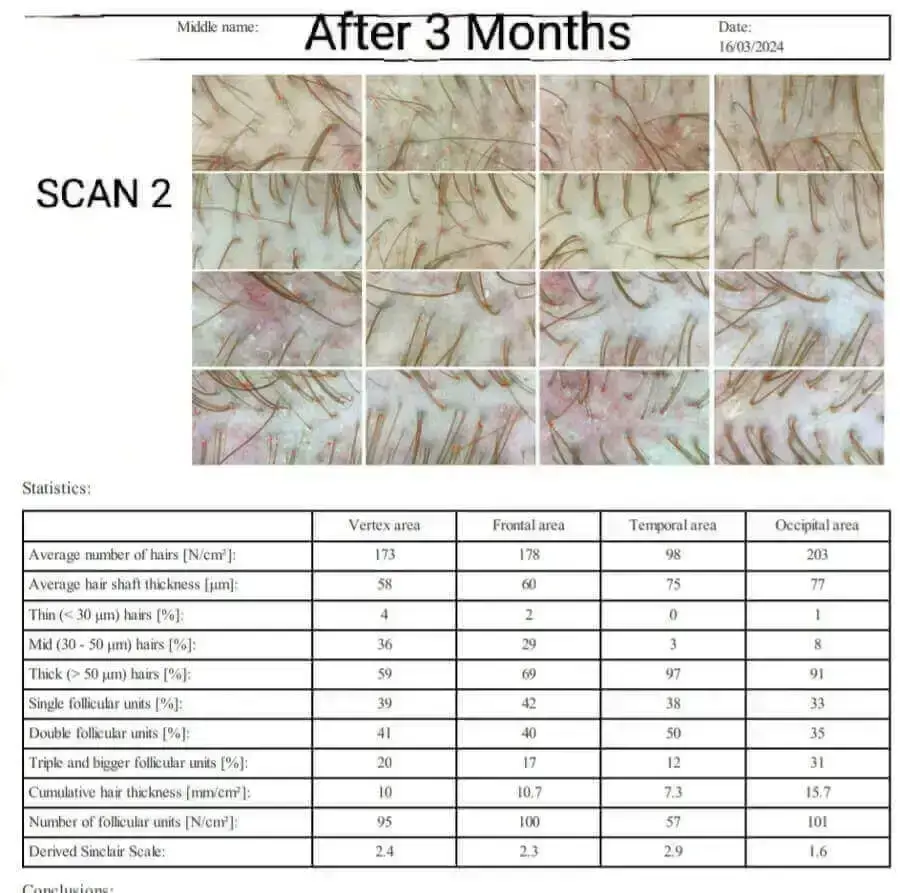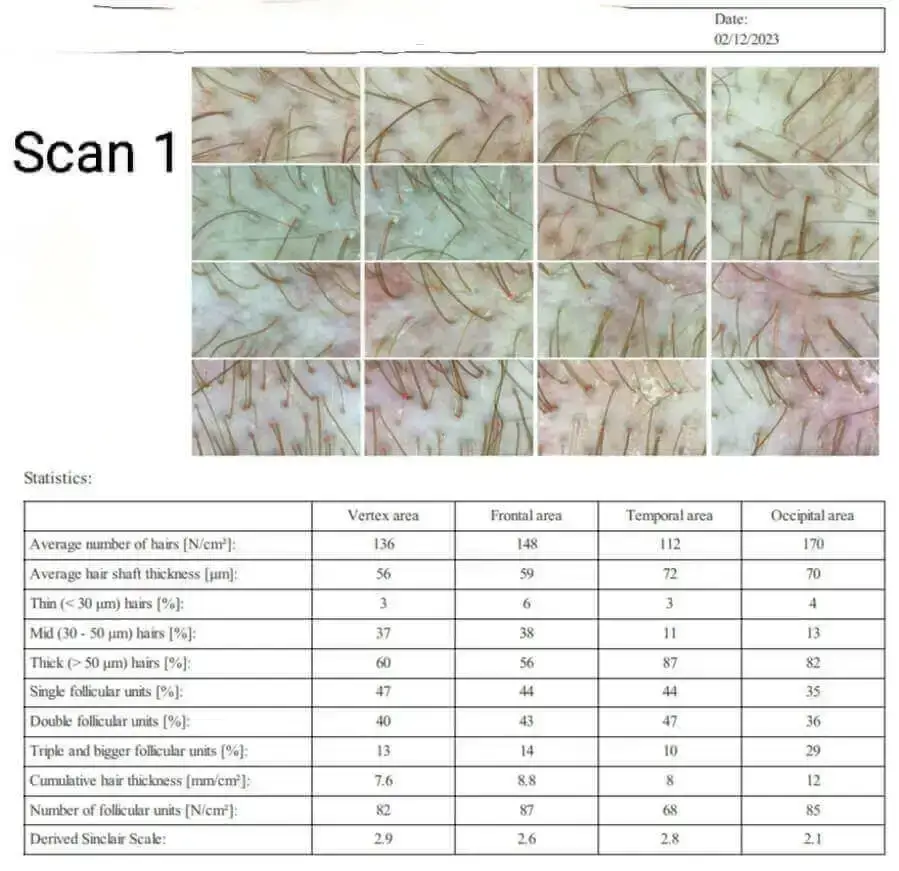I am a member of a hair related WhatsApp group of mostly doctors and surgeons. Various physicians in there sometimes post close-up images of patient scalps. Perhaps the most common photo and imaging technology that is utilized is TrichoScan® (Germany).
Surprisingly, the TrichoScan company website does not have SSL and the homepage has a last update from 2018. The same applies when it comes to the related Tricholog website.
Another German company whose name I have sometimes seen used in tandem with TrichoScan is Fotofinder and its Trichoscale DX. Their automated digital hair analysis technology seems quite impressive. They also offer trichoscopy hair consultations via their TrichoLAB service. Perhaps all of these German companies are related to each other and there is some rebranding going on.
TrichoScan Digital Image Hair Growth Analysis
According to a 2003 article by Rolf Hoffman (associated with the manufacturer) on the at-the-time novel TrichoScan tool:
“TrichoScan as a method that combines epiluminescence microscopy with automatic digital image analysis for the measurement of human, and potentially animal hair, in situ.”
More importantly, TrichoScan is able to analyze all four of the key biologic parameters of hair growth:
- Hair density (number per cm2).
- Hair diameter (?m).
- Hair growth rate (mm per day).
- The anagen/telogen ratio (see hair growth cycle).
In 2010, Dr. Rachita Dhurat and Dr. Punit Saraogi of India found some issues with the accuracy of TrichoScan. In particular, they found that anagen/telogen hair detection is not optimal; total hair density is overestimated; and the vellus hair percentage does not correlate with alopecia severity.
The manufacturer responded in detail to these accusations and also admitted that the very dark Asian hair color can cause some issues in readings. However, these can be resolved with a slight adjustment of the TrichoScan settings. Moreover, the device is now in its third generation and has been significantly refined over the years.
In 2022, a study from China found that TrichoScan was a very useful imaging tool in estimating the exact level of Ludwig hair loss classification in females. This was based on hair density and terminal hair percentage measurements in the midscap region via trichoscopic pictures.
TrichoScan Before and After Images
A few days ago, a Niostem device user named “Falcon” sent me some very interesting before and after 3-month photos of his TrichoScan hair growth analysis. He intends to update us again at the 6-month mark. He got his readings via TrichoLAB, which I mentioned earlier. He has posted many helpful comments on this site, and also on Reddit. Note that Niostem and TrichoLAB are both based in Germany.
I do not want to pay too much attention to just one data point, but “Falcon” does seem reliable. Moreover, his overall positive (+20%) hair growth increase data also shows a decrease in one (temporal) region of the scalp. This adds to his trustworthiness in my opinion. Personally, I am skeptical that Niostem can cause hair growth in totally bald regions of the scalp. However, thickening of existing hair and reversal of recent hair loss via electric stimulation has been proven in some studies.

TricoPat
While I have discussed a number of “Tricho” prefixed scalp hair image analysis brands and companies in this post, TricoPat is entirely different. I am only mentioning this company here because it is also sometimes brought up in our WhatsApp group. According to the Italy and Poland based company’s website:
“TRICOGENESI® is a patented treatment protocol developed by the association of TRICOPAT® and growth factors vehiculated with iontophoresis.”
Somewhat interesting. Electrically-assisted transdermal drug delivery (iontophoresis) has been used for well over a century. It is also one of the techniques that can be used as a topical finasteride delivery system. In the TricoPat protocol, the serum that is applied contains 6 synthetic growth factors.
On a related note, check out the fairly new and popular Alma TED transepidermal delivery system for hair growth (via the use of ultrasound).

